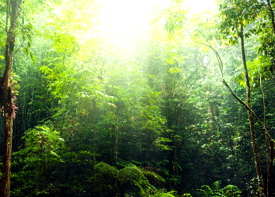
A Florida biologist plans to use orchids as a sort of environmental watchdog to help protect endangered black panthers native to South Florida. Among the most endangered mammals in the U.S., only 120 panthers are believed to remain in existence in Florida’s southern swamps. Like many species around the world, Florida’s panthers are succumbing to a combination of over-hunting that drastically thinned their numbers coupled with the inexorable spread of human sprawl that has severely limited their habitat and food source.
Larry Richardson, chief biologist at the Florida Panther National Wildlife Refuge, believes that orchids that require the same environmental conditions as panthers to thrive can serve as a warning bell should the delicate environmental balance be threatened. For the past 11 years, Richardson has been propagating native orchids at his Florida lab with plans to seed them throughout the panthers’ habitat in Big Cypress National Preserve, Fakahatchee Strand, Picayune Strand and Everglades National Park.
After much experimentation with a variety of native orchids and the fungi they use as a growing medium, Richardson chose seven native species of epiphyte orchids for his panther project. Tree dwellers, epiphyte orchids are susceptible to freezing temperatures which are amplified by lack of water. When epiphytes receive sufficient water, they are able to withstand chillier temperatures. Richardson sees water as the leading edge of possible ecological failure in panther habitats.
Richardson calls the orchids environmental “sentinels” that are particularly sensitive to changes in the supply, quality and distribution of water. Like Florida’s dwindling panther population, they thrive in woodlands, including Florida’s hardwood swamps, oak hammocks and pine flatwoods. Richardson believes that the delicate orchid plants will be among the first species to suffer should human encroachment begin to disrupt the ecological balance of the area, serving as a warning bell that might allow environmentalists to repair the damage before it becomes permanent.

Copyright Just Add Ice® Orchids 2023